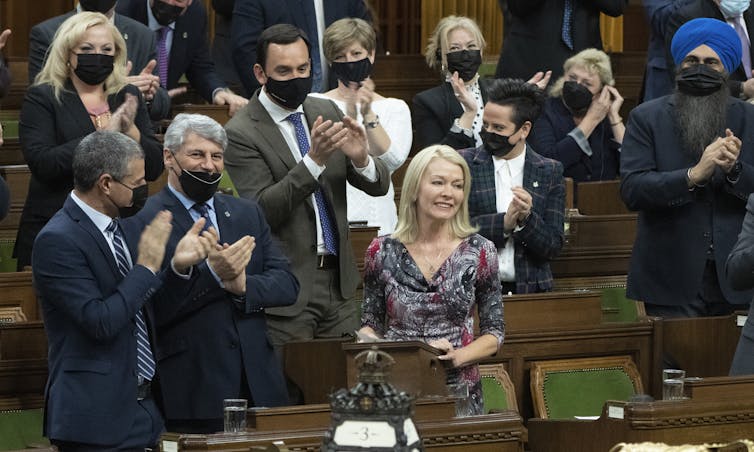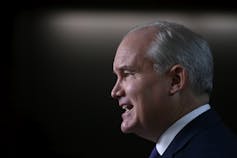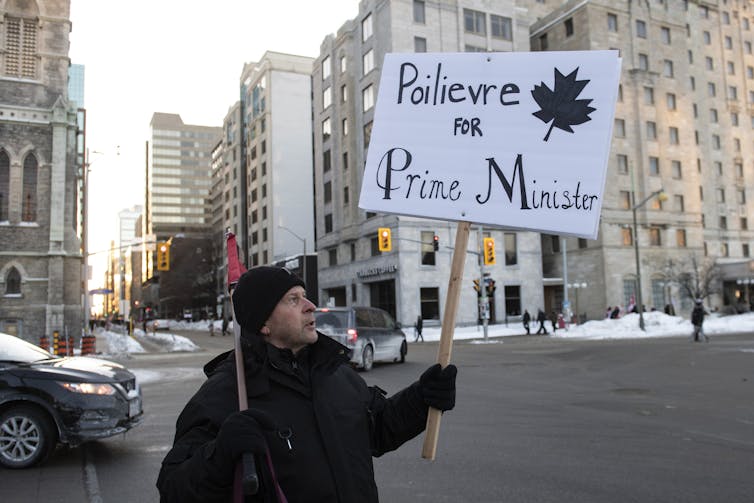News and Updates
Contact
Faculty of Social Science
Social Science Centre
Room 9438
Western University
T. 519-661-2053
F. 519-661-3868
E. social-science@uwo.ca
Replacing Erin O'Toole exposes the Conservative Party’s ever-deepening divides
February 16, 2022
In voting to remove Erin O’Toole as leader, the Conservative Party of Canada’s caucus has raised the thorny question of how the different groups within contemporary conservatism can co-exist and collaborate.
O’Toole’s recent departure reflects a broader ideological and attitudinal division within party ranks against the backdrop of the sharply populist, and angry, anti-Justin Trudeau movement. It remains to be seen whether these forces will be incorporated within the choice of the next leader, in addition to the effect that the party’s incessant infighting will have on broader parliamentary and federal electoral dynamics.
In the months to come, traditional party members and elites will be tempted to align closely with the populist radical-right movement on display during the “freedom convoy” protests in Ottawa and elsewhere. Some already have.
This choice has the potential to be a game-changer. It may shift the movement in a new and discordant direction, and probably consign the Conservatives to the political margins for many years.
Opposing camps
O'Toole’s exit revealed two discernible factions among the party’s elite.
First, a moderate faction (to which O’Toole belonged) seeks a viable electoral position aimed at ideologically flexible, centrist voters. There is truth in the charge that this camp seeks a “Liberal-lite” party brand and wants to communicate to voters that they support the same conventional political and policy structures as the Liberals.

In this camp, the leader is positioned as the main ambassador or envoy of the Conservative government-in-waiting.
A second camp contains more ideologically grounded members, such as Pierre Poilievre and Leslyn Lewis. Generally to the right of the moderates, they think that the Conservative Party should position itself as a confrontational, anti-establishment party.
They seek clear support for the western oil and gas industry, a more adversarial relationship with China, smaller government and opposition to “cancel culture” politics.
This ideological camp argues its views are principled and, in reflecting the true opinions of many Canadians, it offers an electorally viable position that could return the Conservatives to power.
This showdown between moderates and ideologues in many ways mirrors the original differences behind the Reform-Progressive Conservative split.
Growing populism
But what makes this period different is that these tensions, now spilled into the open by O’Toole’s removal, are set against the backdrop of a growing populist disposition among some voters. As with other right-wing populist movements, this is likely linked to broader, long-term factors.
However, this movement has also found contemporary expression in resentment over COVID-19 restrictions and other Liberal policies.

Many members of this movement can be identified through their attitudes towards the status quo, attacking the “woke,” “mainstream media” and “globalist” establishment.
Many, but not all, subscribe to far-right, intolerant and extremist positions. So far, much of their expression has been conducted through other political vehicles like the People’s Party of Canada. But this radical-right mobilization — following the prominence of the ongoing Ottawa protest — could be an untapped opportunity to grow support for the Conservative Party of Canada.
So, over the next months, the ideologues and the populist radical right may create a new coalition. A full populist-infused takeover of the Conservative Party via the pending leadership race is possible.
Voters who support this new ideological coalition could be the key to a successful leadership election because, in a fashion reminiscent of Donald Trump’s takeover of the Republican Party in the United States, they can mobilize votes and financial contributions. The new leader may well emerge from this camp.
Likely unelectable
In this case, the moderates will be in full retreat. The party will move to the right, adopting a party attitude that will be more fervent and uncompromising in its principles.
But this scenario will probably have a negative impact on Canadian democracy. In addition to reducing federal politics to an even more vulgar level, this new version of the Conservative Party is very clearly unelectable. Supported perhaps in areas of the West and rural Canada, it will not work to bring centrist, urban, diverse and young voters — those who decide federal elections — to the party’s side.
Therefore the new populist, radical-right leader will have two options.
First, transition to a moderate, electorally viable campaign platform, thereby facing the same dilemma as O’Toole faced.
Second, cling to an unpopular radical-right ideological view that will make the party unelectable, thereby ensuring Liberal rule for the foreseeable future.
Democracy benefits from the electoral viability of an alternative party on the centre-right. An unelectable Conservative Party will ensure the Liberals will be even more dominant owing to the absence of political competition.

It’s possible the next Conservative leader, while certainly more right-wing, could succeed where O’Toole failed and strike a delicate balance between the party’s factions and the Canadian public. While Poilievre has announced his candidacy, there may be other contenders.
But this sort of partisan unity requires a rare talent for leadership and bringing the party together that so far has only been displayed by one person: Stephen Harper. ![]()
Sam Routley, PhD Student, Political Science, Western University and Cristine de Clercy, Associate Professor, Politics, Western University
This article is republished from The Conversation under a Creative Commons license. Read the original article.

